Archives
- 2025-12
- 2025-11
- 2025-10
- 2025-09
- 2025-03
- 2025-02
- 2025-01
- 2024-12
- 2024-11
- 2024-10
- 2024-09
- 2024-08
- 2024-07
- 2024-06
- 2024-05
- 2024-04
- 2024-03
- 2024-02
- 2024-01
- 2023-12
- 2023-11
- 2023-10
- 2023-09
- 2023-08
- 2023-07
- 2023-06
- 2023-05
- 2023-04
- 2023-03
- 2023-02
- 2023-01
- 2022-12
- 2022-11
- 2022-10
- 2022-09
- 2022-08
- 2022-07
- 2022-06
- 2022-05
- 2022-04
- 2022-03
- 2022-02
- 2022-01
- 2021-12
- 2021-11
- 2021-10
- 2021-09
- 2021-08
- 2021-07
- 2021-06
- 2021-05
- 2021-04
- 2021-03
- 2021-02
- 2021-01
- 2020-12
- 2020-11
- 2020-10
- 2020-09
- 2020-08
- 2020-07
- 2020-06
- 2020-05
- 2020-04
- 2020-03
- 2020-02
- 2020-01
- 2019-12
- 2019-11
- 2019-10
- 2019-09
- 2019-08
- 2019-07
- 2019-06
- 2019-05
- 2019-04
- 2018-07
-
br Ketone body metabolism and neuronal
2021-09-30
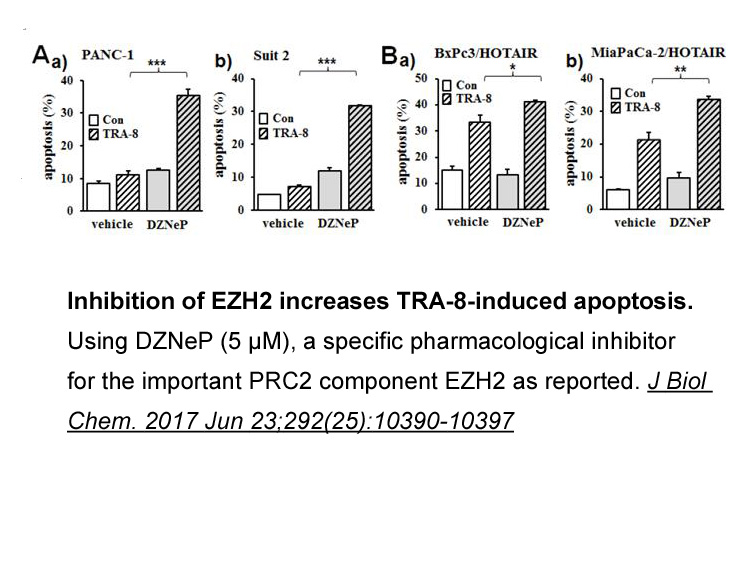
Ketone body metabolism and neuronal excitability One of the best examples of the close connection between metabolism and neuronal excitability is illustrated by the effect of ketone bodies on epileptic seizures. One third of patients suffering from epileptic seizures do not respond to conventiona
-
WP1130 br Potential endogenous agonists of GPR The first
2021-09-30
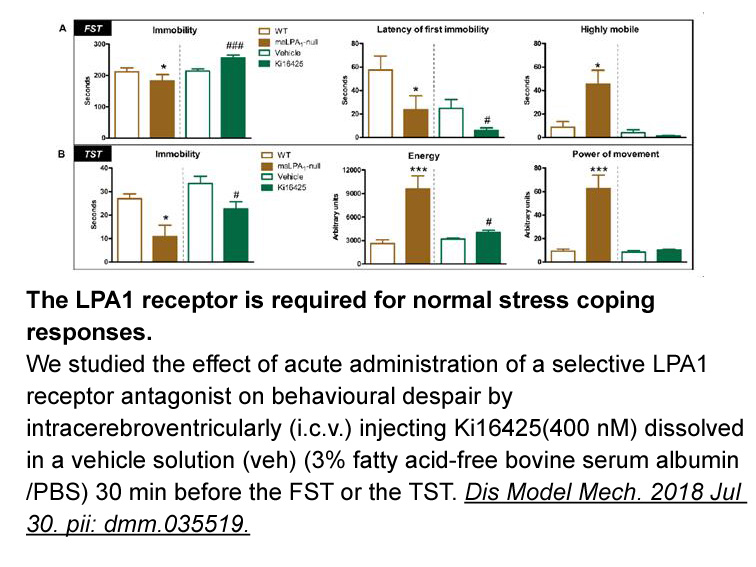
Potential endogenous agonists of GPR35 The first endogenously produced chemical that was shown to be able to activate GPR35 was the tryptophan metabolite kynurenic WP1130 [8]. When human GPR35 was expressed along with a mixture of promiscuous and chimeric G proteins 9, 10 (Box 1) in CHO cells, a
-
Intranasal immunization can induce the activation of IgA sec
2021-09-30
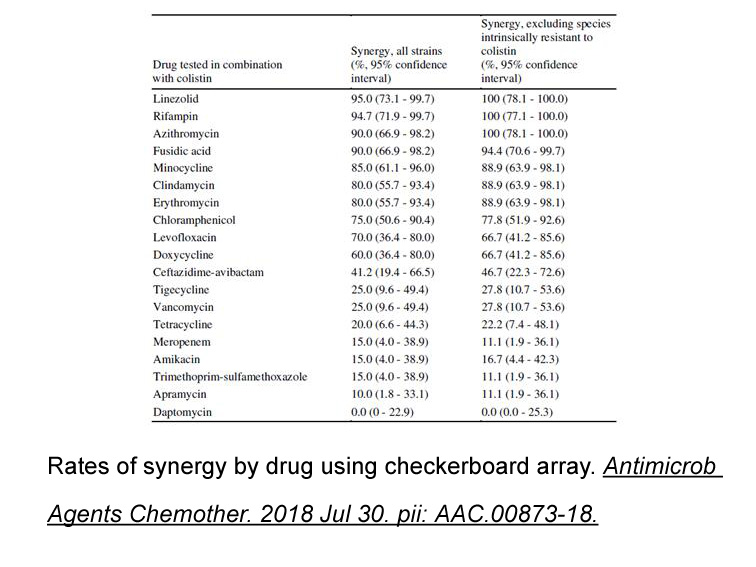
Intranasal immunization can induce the activation of IgA-secreting plasma cell precursors that are present in NALT and induce IgA antibody-secreting cells; these cells express l-selectin (+), allowing migration to the lymphatic nodes, as well as α4β1 (+), CXCR4 (+), and CCR10 (+), which facilitate m
-
GSK2879552 mg br Acknowledgements br Introduction Glucagon a
2021-09-30
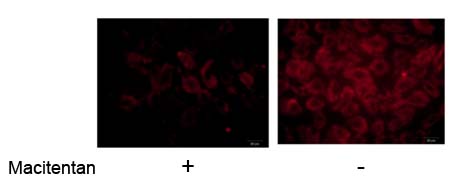
Acknowledgements Introduction Glucagon, a 29-amino GSK2879552 mg peptide, is released from the pancreatic islets, intestine and stomach. Glucagon is released under hypoglycemic conditions and then elevates blood glucose levels, serving as a major counter hormone [1]. The regulation of glucose
-
The observed CORT induced increase in
2021-09-30

The observed CORT-induced increase in Cx43 phosphorylation at S368 may also contribute to GJIC disruption. Gap junction channel permeability is modulated through connexin phosphorylation (Moreno and Lau, 2007). Specifically, the phosphorylation of Cx43 on S368 has been previously shown to decrease i
-
br Discussion The model of a NVU described by Mathias
2021-09-30
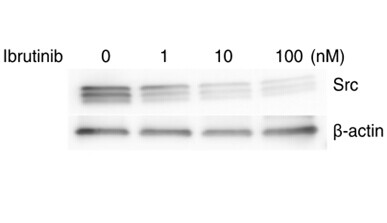
Discussion The model of a NVU described by Mathias et al. (2018) has been implemented on the macro scale (see Kenny et al. (2018b)) via a 2D cerebral tissue slice coupled to a vascular tree. In particular, further communication within the tissue slice has been implemented via extracellular ion el
-
When we compared the effects in
2021-09-30
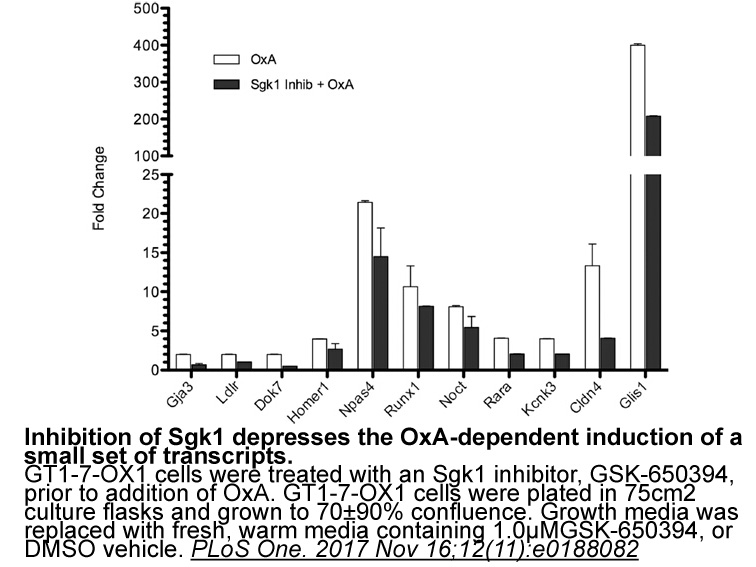
When we compared the effects in FST induced by GAL and GAL(1–15), we observed that the increase in the immobility induced by GAL(1–15) was significantly higher than the one induced by GAL (Millon et al., 2015). Moreover, in climbing behaviour, GAL(1–15) also induced a stronger decrease in climbing r
-
Formyl peptide receptors FPRs are a family of
2021-09-29
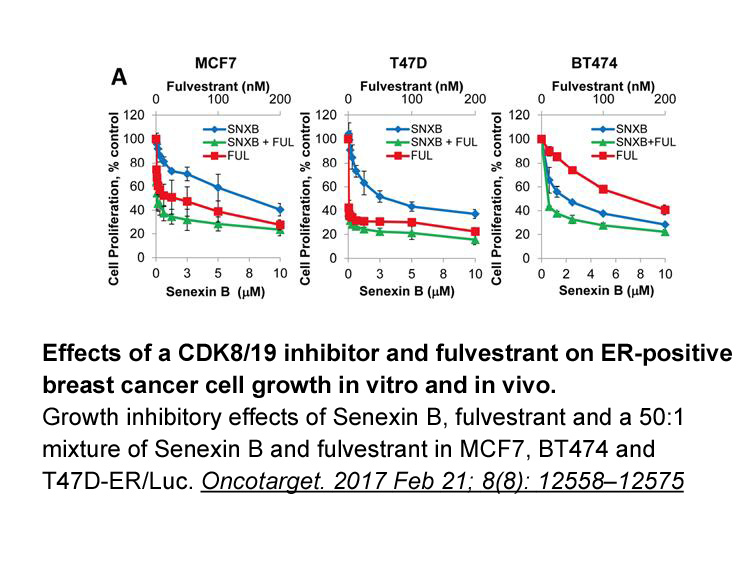
Formyl peptide receptors (FPRs) are a family of surface-expressed, G protein-coupled receptors [7]. The three members, FPR1, FPR2 and FPR3, share significant sequence homology, but have different functional properties [7]. While FPRs are mainly expressed by innate leukocytes, they are also found on
-
Acquiring resistance to the FGFR inhibitor may determine
2021-09-29
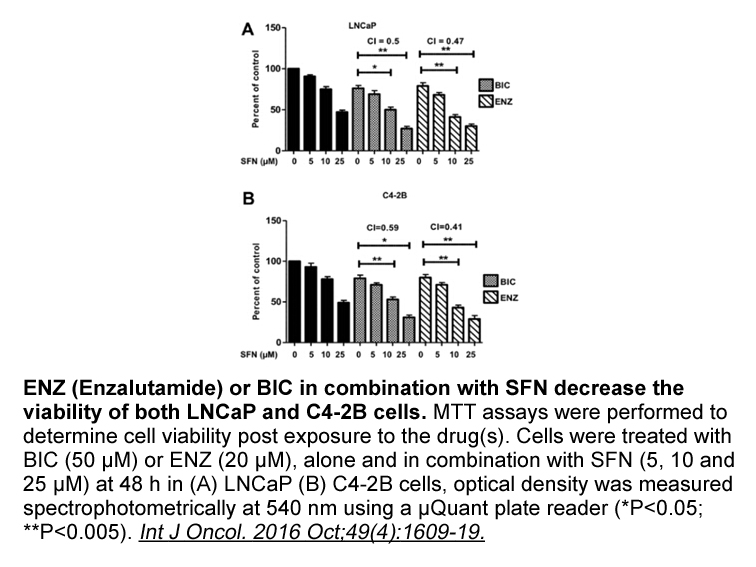
Acquiring resistance to the FGFR inhibitor may determine treatment outcomes in patients with GC dependent on FGFR2 amplification, and we investigated the mechanism of AZD4547 resistance in FGFR2-amplified GC cells. We established a FGFR2-amplified GC cell line resistant to the selective FGFR inhibit
-
The precise mechanism by which erastin inhibits
2021-09-29
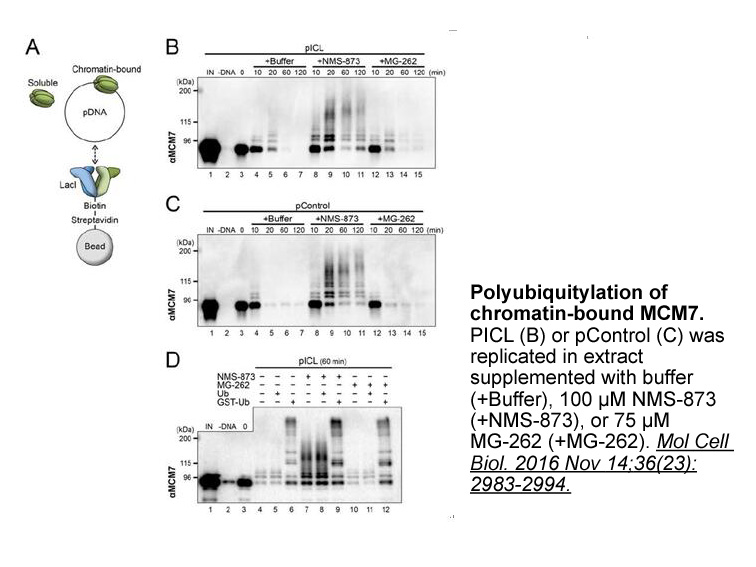
The precise mechanism by which erastin inhibits SLC7A11-mediated cystine import it still unknown. The initially proposed mechanism, by which erastin binds a related transport protein, SLC7A5, and inhibits SLC7A11 in trans [25], was revised soon after, and it was suggested that erastin inhibits SLC7
-
The LOD and linear range of the cobas HBV
2021-09-29

The LOD and linear range of the cobas HBV test using the cobas 4800 system in this study were similar to those provided by the manufacturer. We found a strong correlation between the results of the cobas HBV test and CAP/CTM v2.0 systems; however, 7.7% of samples yielded detectable results only with
-
The LOD and linear range of the cobas HBV
2021-09-29
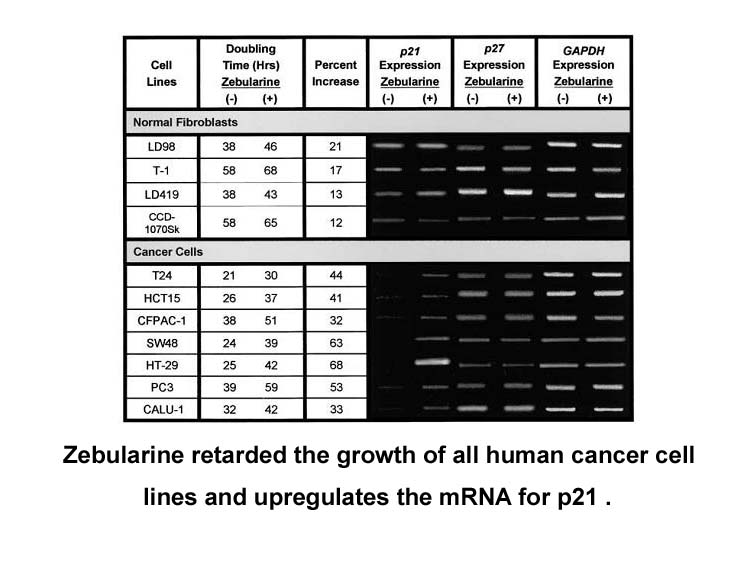
The LOD and linear range of the cobas HBV test using the cobas 4800 system in this study were similar to those provided by the manufacturer. We found a strong correlation between the results of the cobas HBV test and CAP/CTM v2.0 systems; however, 7.7% of samples yielded detectable results only with
-
In conclusion LA is able to enhance osteoblast differentiati
2021-09-29
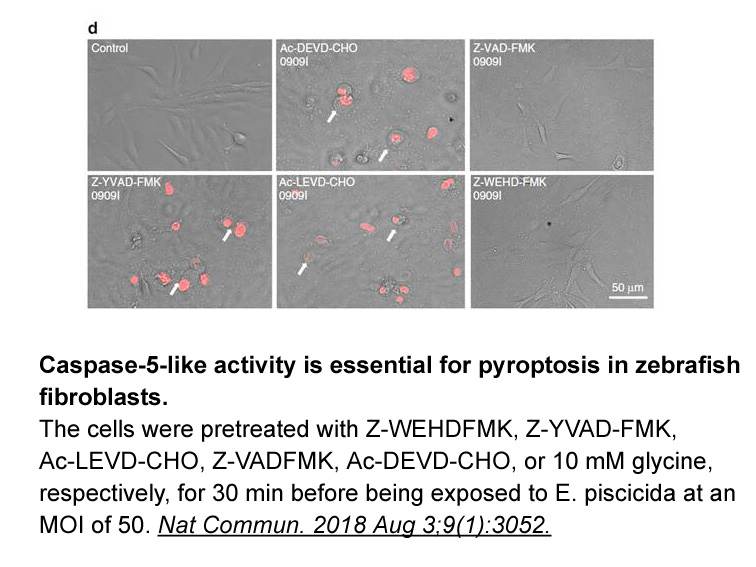
In conclusion, LA is able to enhance osteoblast differentiation that mediated by PTH in a MCT-1 independent but GPR81 signaling dependent manner. This increase requires p38 activation and an Akt activation that depended on Gβγ-protein-PLC-PKC signaling. However, the ability of LA to increase PTH–med
-
Apart from the different assays used biased
2021-09-29
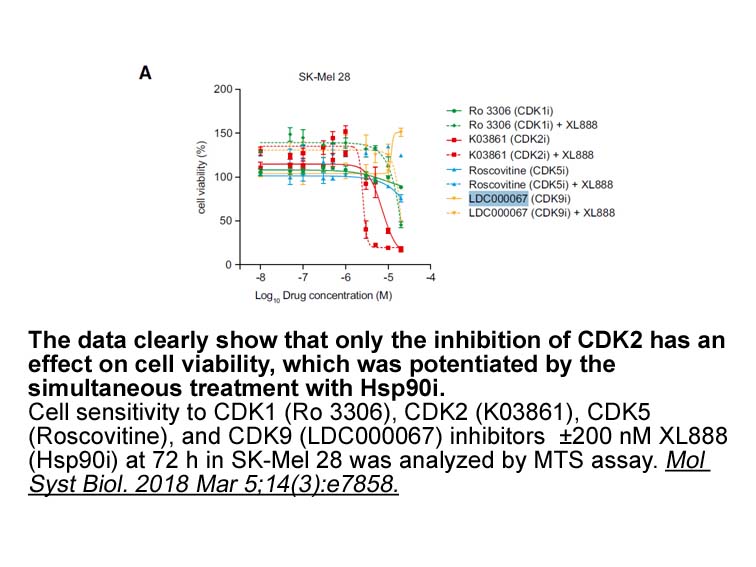
Apart from the different assays used, biased agonism could also explain the inconsistent pharmacology of GPR55. Indeed, one study compared the effect of LPIs and Virodhamine in HEK293 QX 314 chloride synthesis stably transfected with human GPR55. They found that the effect of both ligands on intrac
-
In addition during the preparation of
2021-09-29
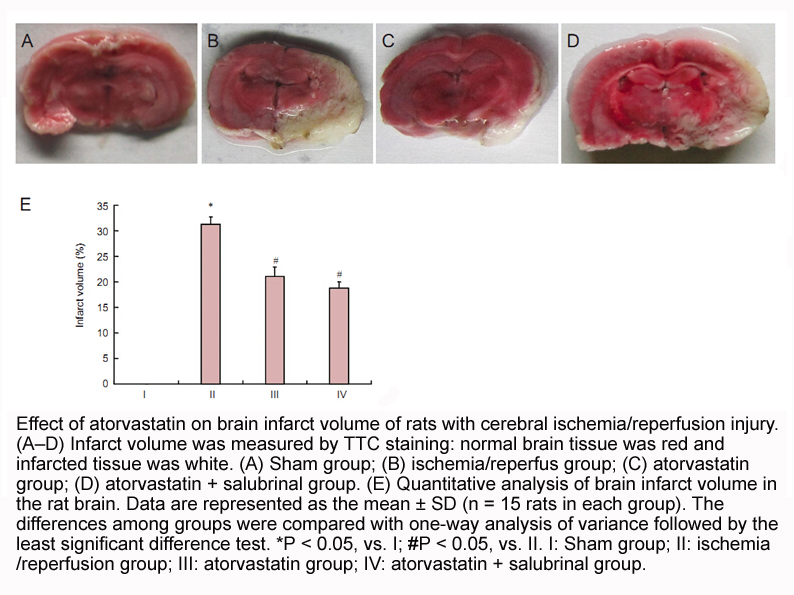
In addition, during the preparation of this manuscript, Oka et al. [7] demonstrated that LPA acts as receptor ligand for GPR35 and that LPA is more potent than KYNA in eliciting a calcium mobilization (EC50: 30nM vs. 39μM for LPA and KYNA, respectively). Other endogenous GPR35 ligands, therefore, mi
16094 records 596/1073 page Previous Next First page 上5页 596597598599600 下5页 Last page